Devendra Sachan
Gemini: A Family of Highly Capable Multimodal Models
Dec 19, 2023Abstract:This report introduces a new family of multimodal models, Gemini, that exhibit remarkable capabilities across image, audio, video, and text understanding. The Gemini family consists of Ultra, Pro, and Nano sizes, suitable for applications ranging from complex reasoning tasks to on-device memory-constrained use-cases. Evaluation on a broad range of benchmarks shows that our most-capable Gemini Ultra model advances the state of the art in 30 of 32 of these benchmarks - notably being the first model to achieve human-expert performance on the well-studied exam benchmark MMLU, and improving the state of the art in every one of the 20 multimodal benchmarks we examined. We believe that the new capabilities of Gemini models in cross-modal reasoning and language understanding will enable a wide variety of use cases and we discuss our approach toward deploying them responsibly to users.
Improving Robustness of Retrieval Augmented Translation via Shuffling of Suggestions
Oct 11, 2022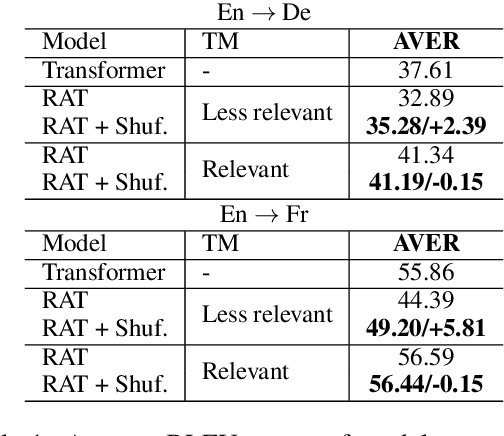
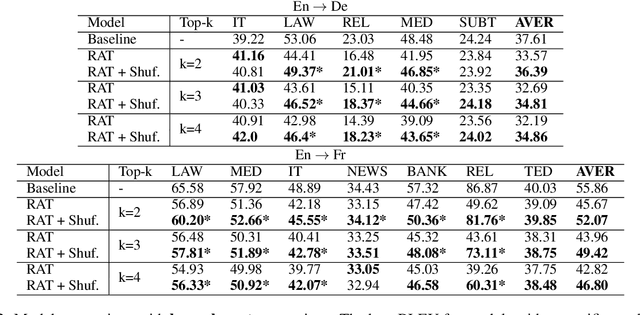
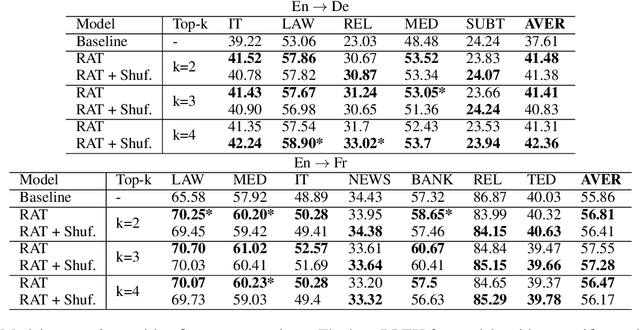
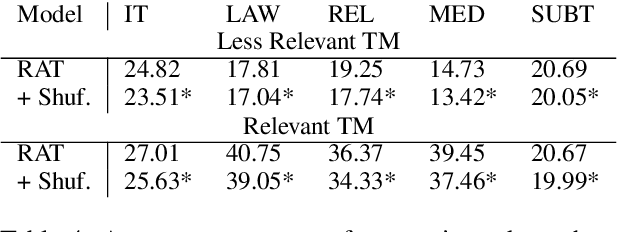
Abstract:Several recent studies have reported dramatic performance improvements in neural machine translation (NMT) by augmenting translation at inference time with fuzzy-matches retrieved from a translation memory (TM). However, these studies all operate under the assumption that the TMs available at test time are highly relevant to the testset. We demonstrate that for existing retrieval augmented translation methods, using a TM with a domain mismatch to the test set can result in substantially worse performance compared to not using a TM at all. We propose a simple method to expose fuzzy-match NMT systems during training and show that it results in a system that is much more tolerant (regaining up to 5.8 BLEU) to inference with TMs with domain mismatch. Also, the model is still competitive to the baseline when fed with suggestions from relevant TMs.
Improving Retrieval Augmented Neural Machine Translation by Controlling Source and Fuzzy-Match Interactions
Oct 10, 2022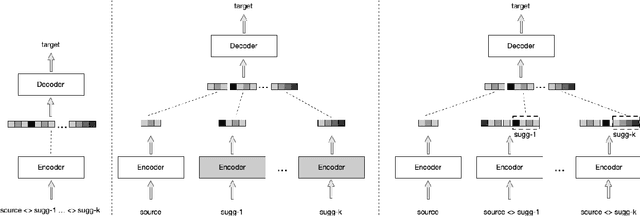
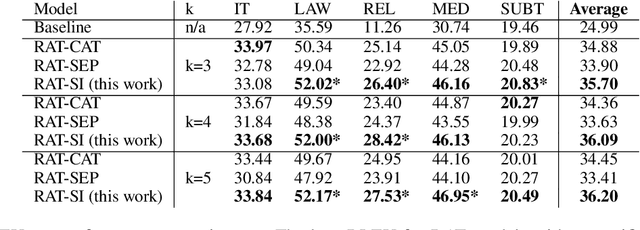

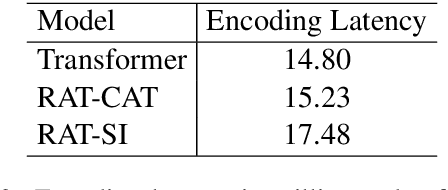
Abstract:We explore zero-shot adaptation, where a general-domain model has access to customer or domain specific parallel data at inference time, but not during training. We build on the idea of Retrieval Augmented Translation (RAT) where top-k in-domain fuzzy matches are found for the source sentence, and target-language translations of those fuzzy-matched sentences are provided to the translation model at inference time. We propose a novel architecture to control interactions between a source sentence and the top-k fuzzy target-language matches, and compare it to architectures from prior work. We conduct experiments in two language pairs (En-De and En-Fr) by training models on WMT data and testing them with five and seven multi-domain datasets, respectively. Our approach consistently outperforms the alternative architectures, improving BLEU across language pair, domain, and number k of fuzzy matches.
 Add to Chrome
Add to Chrome Add to Firefox
Add to Firefox Add to Edge
Add to Edge